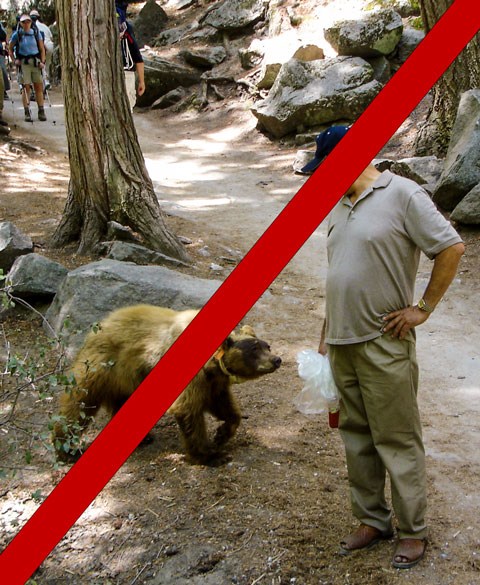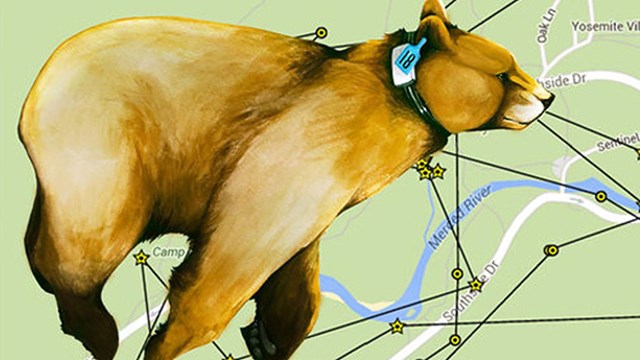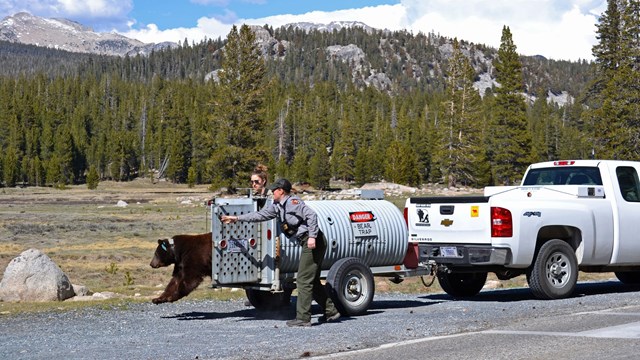
Photo by Sean Crom You may not see a bear during your visit because bears naturally avoid people. If you do see a bear, what you should do depends on the situation. In any case, always let a ranger know or leave a message at 209/372-0322. If a bear is attempting to get human food or won't leave a developed area, you can call 911. Bear in a Developed Area or Approaching YouIf a bear approaches you or if you are in a campground, picnic area, parking lot, lodging area, or other developed area, act immediately to scare it away. Scare the bear away by yelling aggressively and as loudly as possible until the bear leaves. The bear is intruding on your personal space: act angry and be persistent. If you are with other people, stand together to present a more intimidating figure, but do not surround the bear. While never a guarantee, these techniques are highly effective when done well. (Bear spray/pepper spray is not allowed in Yosemite.) If you have food out and are having trouble scaring the bear away, pack up all your food and leave the area. Throwing food at the bear or leaving food behind will only encourage its behavior and likely result in the bear's death. Never have out more food than you can control and do not leave food out of arm's reach, even for a moment. (Do not try to take back food that a bear already has.) The purpose of yelling aggressively is not to harm the bear, but to scare it from the area and restore its natural fear of people by providing a negative experience. Scaring a bear away, along with storing your food properly, helps keeps bears wild and alive. Bear Outside Developed Areas and Not Approaching PeopleIf you see a bear away from development and people, keep your distance (at least 50 yards, or about the distance four shuttle buses parked end to end would take up). If you get closer, you will be helping the bear become used to being around people. Bears that become comfortable around people lose their natural fear of us and sometimes become too aggressive; sometimes they then have to be killed. When a ranger sees a bear, the ranger may use non-lethal aversive tactics to chase the bear out of a developed area. During your visit, you may see and hear rangers patrolling public areas for bears. You may hear rangers yelling at and chasing bears. You may also see or hear rangers shooting noisemakers or non-lethal projectiles (such as rubber slugs from a shotgun or clear paintballs from a paintball gun). The intent is not to harm the bear, but to scare it from the area and restore its natural fear of people by providing a negative experience. NOTE: These regulations and precautions help decrease the chance of personal injury or property damage. However, bear damage and confrontations are still possible even when all of the above guidelines are followed. Failure to comply with these regulations may result in citation and/or impoundment of property. 
Bear-Tracker
Throughout their non-hibernating months, Yosemite’s black bears are always on the move — and tracking them is no easy feat. 
Bear Team Blog
The bear team works to protect the American black bear in Yosemite National Park so that it can continue its healthy existence. |
Last updated: July 6, 2022
